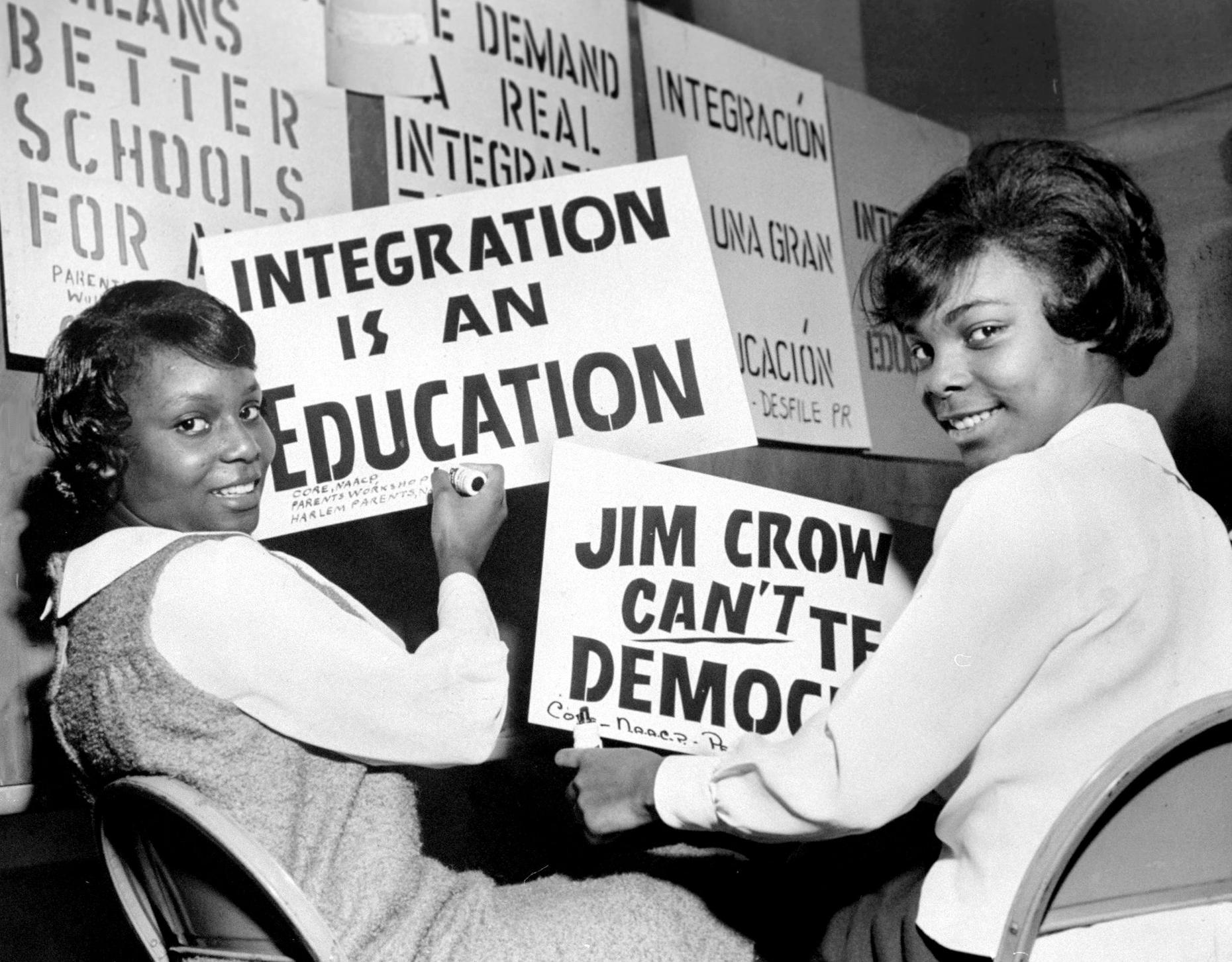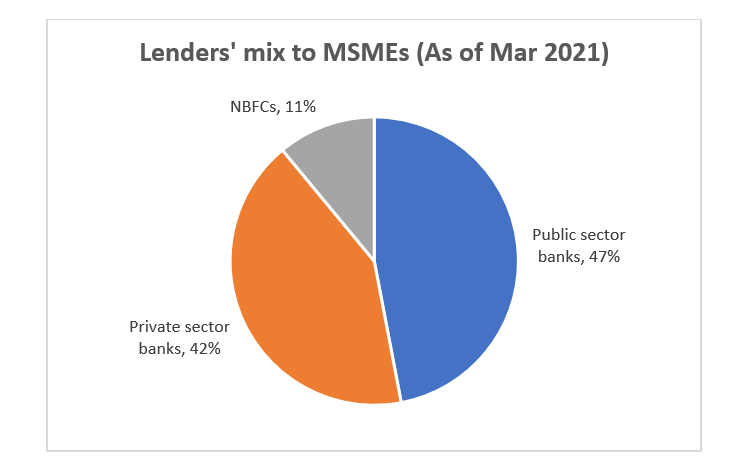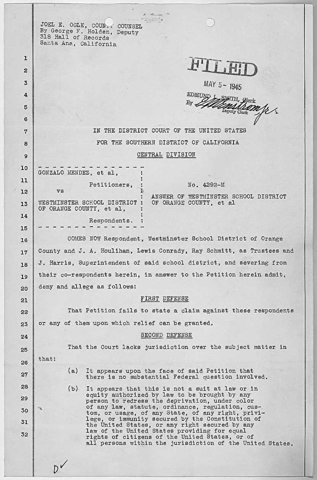School Desegregation Orders: The End Of An Era?

Table of Contents
The Legacy of Brown v. Board of Education and Subsequent Orders
The Impact of Brown v. Board:
The 1954 Brown v. Board of Education Supreme Court decision declared state laws establishing separate public schools for black and white students unconstitutional. This landmark case, a pivotal moment in the Civil Rights Movement, aimed to dismantle the system of racial segregation that had long permeated American education. However, the impact of Brown v. Board was far from immediate or uniform.
- Resistance to Desegregation: Many states and communities actively resisted desegregation, employing various tactics to delay or circumvent the ruling. "Massive resistance" movements emerged, employing legal challenges, delaying tactics, and even outright defiance.
- Slow Pace of Implementation: The desegregation process proved agonizingly slow, with many schools remaining segregated for years, even decades, after the Brown decision.
- Varying Interpretations Across States: The implementation of Brown v. Board varied widely across different states and localities, reflecting differing levels of commitment to desegregation and the influence of local politics.
Subsequent Court Cases and Orders:
Following Brown v. Board, several subsequent court cases further shaped desegregation efforts. These cases often addressed specific remedies and strategies for achieving integration.
- Swann v. Charlotte-Mecklenburg Board of Education (1971): This landmark case affirmed the use of busing as a tool to achieve racial balance in schools, a controversial but significant step in desegregation efforts. The court allowed for busing across school district lines to achieve racial integration.
- Other Key Cases: Numerous other cases clarified the scope of desegregation orders, addressing issues such as school assignment policies, the redrawing of school district boundaries, and the allocation of resources. These rulings significantly shaped the legal landscape of school desegregation.
The Role of Federal Oversight:
The federal government played a crucial role in enforcing desegregation orders, primarily through the Department of Justice. However, this oversight faced significant challenges.
- Limitations of Federal Power: Federal authority to enforce desegregation was often limited by state and local resistance, necessitating legal battles and court interventions.
- Challenges in Monitoring Compliance: Monitoring compliance with desegregation orders across thousands of school districts proved a massive undertaking, often hampered by limited resources and bureaucratic obstacles.
- Shifting Priorities: Over time, federal focus shifted, leading to reduced oversight and enforcement in some areas.
The Current State of School Segregation: De Facto Segregation
Understanding De Facto Segregation:
While de jure segregation (segregation by law) has largely been dismantled, de facto segregation (segregation in practice) persists. This often results from residential segregation, leading to racially imbalanced schools.
- Causes of De Facto Segregation: Housing patterns, school choice policies, and historical inequalities contribute to de facto segregation, creating a system where schools remain disproportionately segregated by race.
- Effects on Student Achievement: De facto segregation perpetuates disparities in school funding, resources, and educational outcomes, contributing to the persistent achievement gap between students of different racial backgrounds. Data consistently reveals significant racial disparities in test scores, graduation rates, and college enrollment.
The Challenges of Addressing De Facto Segregation:
Addressing de facto segregation through legal means presents formidable challenges. Desegregation orders, designed to combat de jure segregation, are less effective in tackling the complex web of factors contributing to de facto segregation.
- Limitations of Current Legal Frameworks: Existing legal frameworks often struggle to address the subtle but pervasive ways in which de facto segregation manifests.
- Political Obstacles: Efforts to address de facto segregation frequently encounter political resistance, reflecting deeply rooted societal biases and disagreements over the appropriate role of government intervention.
- The Need for Alternative Approaches: Addressing de facto segregation requires a multi-pronged approach that goes beyond legal remedies and involves addressing underlying issues such as housing segregation, unequal resource allocation, and systemic inequalities.
The Future of School Desegregation Orders: A Shifting Landscape
Arguments for Maintaining Desegregation Orders:
Proponents of maintaining desegregation orders argue that these tools remain necessary to ensure racial equity in education.
- Ongoing Need for Intervention: They contend that the legacy of segregation continues to impact schools, necessitating ongoing intervention to address persistent racial disparities.
- Importance of Monitoring Racial Disparities: Continued monitoring and enforcement are crucial to prevent backsliding and ensure that schools remain committed to integration.
- Role of Desegregation Orders in Promoting Diversity: Desegregation orders, they argue, are essential in fostering diverse learning environments that benefit all students.
Arguments Against Maintaining Desegregation Orders:
Critics of desegregation orders raise concerns about their efficacy and fairness.
- Unintended Consequences of Certain Remedies: Some remedies, such as mandatory busing, have led to unintended consequences, such as disruption to communities and resentment among some families.
- Potential for Reverse Discrimination: Concerns exist that some desegregation efforts may lead to reverse discrimination, inadvertently disadvantaging certain groups.
- Need for Alternative Approaches Focused on Equitable Resource Allocation: Critics suggest a shift in focus towards addressing systemic inequalities through equitable resource allocation and other strategies that address the root causes of educational disparities.
Conclusion: The Ongoing Struggle for Educational Equity
The debate surrounding school desegregation orders highlights the enduring challenge of achieving true racial equality in education. While these orders played a crucial role in dismantling de jure segregation, their effectiveness in addressing de facto segregation and the persistent achievement gap remains a subject of ongoing debate. The arguments for and against maintaining these orders reflect differing perspectives on the role of government intervention, the efficacy of legal remedies, and the path towards creating a truly integrated and equitable educational system. The fight for equitable education through effective school desegregation orders, or alternative approaches, continues. We must actively engage in this discussion and work towards solutions that ensure equal educational opportunities for all students. Learn more about the ongoing debate and get involved in promoting equitable education today.

Featured Posts
-
 Saudi Arabias Abs Market Opens A Rule Change Bigger Than Spain
May 02, 2025
Saudi Arabias Abs Market Opens A Rule Change Bigger Than Spain
May 02, 2025 -
 Is Doctor Who Ending Showrunners Comments Spark Cancellation Concerns
May 02, 2025
Is Doctor Who Ending Showrunners Comments Spark Cancellation Concerns
May 02, 2025 -
 The End Of An Era Justice Departments School Desegregation Order Decision Analyzed
May 02, 2025
The End Of An Era Justice Departments School Desegregation Order Decision Analyzed
May 02, 2025 -
 The Future Of Fortnite Examining Game Mode Removals
May 02, 2025
The Future Of Fortnite Examining Game Mode Removals
May 02, 2025 -
 Israil Meclisinde Esir Yakinlari Ve Guevenlik Goerevlileri Arasinda Cikan Arbede
May 02, 2025
Israil Meclisinde Esir Yakinlari Ve Guevenlik Goerevlileri Arasinda Cikan Arbede
May 02, 2025
Latest Posts
-
 Harry Styles Reaction To A Hilariously Bad Snl Impression
May 10, 2025
Harry Styles Reaction To A Hilariously Bad Snl Impression
May 10, 2025 -
 Harry Styles On That Bad Snl Impression His Honest Response
May 10, 2025
Harry Styles On That Bad Snl Impression His Honest Response
May 10, 2025 -
 Snls Harry Styles Impression The Singers Reaction
May 10, 2025
Snls Harry Styles Impression The Singers Reaction
May 10, 2025 -
 Harry Styles Response To A Bad Snl Impression Disappointed
May 10, 2025
Harry Styles Response To A Bad Snl Impression Disappointed
May 10, 2025 -
 The Snl Harry Styles Impression A Disappointing Reaction
May 10, 2025
The Snl Harry Styles Impression A Disappointing Reaction
May 10, 2025
